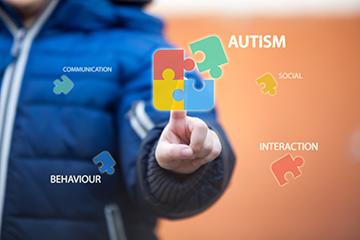July 11, 2016
Designing Interventions that Work for Children with Autism

Many children diagnosed with autism spectrum disorder (ASD) have delayed speech. Yet a significant proportion of children with ASD do not seem to benefit from traditional supportive interventions and remain minimally verbal even by the time they reach school age. Failure to reach this benchmark puts these children at high risk of poor long-term outcomes. Survey Research Center researchers Daniel Almirall and Inbal Nahum-Shani, along with colleagues around the country, are investigating alternative interventions that may make a difference.
A challenge in designing therapeutic interventions is that one size does not fit all; there is considerable amount of heterogeneity among children with autism. One child may benefit from a basic treatment while another needs more intensive, or augmented, intervention. The timing is likely to vary as well. One child may benefit relatively quickly, while another will take longer. One way that Almirall, Nahum-Shani and others have proposed to deal with these differences is to design a treatment plan that adapts to the changing needs of the individual child. Adaptive interventions aim to do just that, determining whether, how, or when to alter treatment depending on what works for any given child.
In a recent publication, Almirall and colleagues describe results from a sequential multiple assignment randomized trial (SMART) to develop an adaptive intervention over three months aimed at improving social communication in children age 5 to 8 with ASD who were minimally verbal. All sixty-one children in the trial received behavioral communication interventions (joint attention, symbolic play, engagement and regulation with enhanced milieu teaching). Within that context, the adaptive intervention included the additional provision of different speech-generating devices (SGD).
The researchers compared the trajectories of change in a set of verbal, communication, and nonlinguistic outcomes across three adaptive interventions over the three months of follow-up. The three adaptive interventions differed in terms of the timing of the provision of the SGD: one adaptive intervention provided no SGD, the second provided a SGD only to children showing early signs of slow response, and a third provided the SGD to all children at the beginning of treatment. Results showed that the adaptive intervention providing SGD initially to all children led to the greatest improvement. The study is believed to be the first-ever to compare longitudinal outcomes (trajectories of change) between adaptive interventions using data from a SMART.